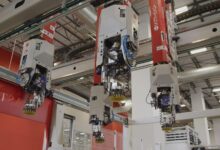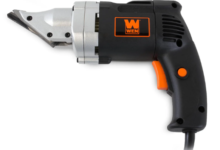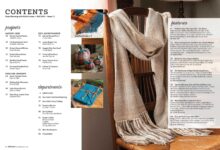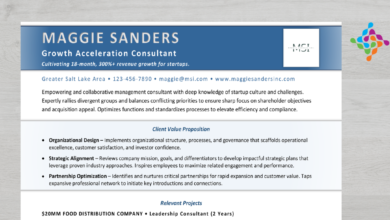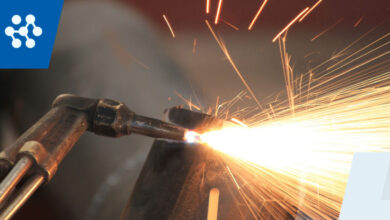CNC Milling Guide: A Comprehensive Handbook for Beginners
Advertisement
Introduction
With the rise of technology in the manufacturing industry, CNC milling has become an essential process for creating precise and intricate parts. This guide aims to provide beginners with a comprehensive overview of CNC milling, including its strengths and weaknesses, as well as a step-by-step tutorial on how to use this powerful tool effectively.
Understanding CNC Milling
CNC milling, or computer numerical control milling, is a machining process that utilizes computerized controls and rotating multi-point cutting tools to remove material from a workpiece. This process is commonly used in industries such as aerospace, automotive, and electronics to create complex parts with high precision.
One of the key benefits of CNC milling is its ability to produce parts with tight tolerances and intricate designs that would be difficult or impossible to achieve manually. By programming the machine to follow a specific set of instructions, manufacturers can create parts with unparalleled accuracy and consistency.
Additionally, CNC milling allows for faster production times compared to traditional machining methods. With the use of specialized software, operators can quickly generate toolpaths and optimize cutting speeds to increase efficiency and reduce overall production costs.
Despite its many advantages, CNC milling also has some limitations. The initial cost of purchasing and setting up a CNC milling machine can be prohibitively expensive for small businesses or hobbyists. Additionally, the complex programming required to operate these machines may require specialized training, further adding to the overall cost of implementation.
Furthermore, CNC milling machines are not suitable for every type of material. While they excel at cutting metals such as aluminum and steel, they may struggle with softer materials like plastics or wood. Operators must also be cautious when working with certain materials that may produce harmful dust or fumes during the milling process.
Overall, CNC milling is a powerful tool for manufacturers looking to increase efficiency, accuracy, and productivity in their operations. By understanding the strengths and weaknesses of this process, beginners can make informed decisions about whether CNC milling is the right solution for their needs.
Benefits of CNC Milling
One of the main advantages of CNC milling is its ability to produce parts with highly complex geometries and tight tolerances. The precision and accuracy of CNC machines make them ideal for creating intricate designs that would be impossible to achieve through manual machining.
Additionally, CNC milling offers increased production speeds and efficiency compared to traditional machining methods. By automating the cutting process, manufacturers can reduce cycle times, minimize errors, and maximize output without sacrificing quality.
CNC milling also allows for greater flexibility and customization in part production. With the use of CAD/CAM software, operators can easily modify designs, test different toolpaths, and make adjustments on the fly to meet changing production requirements.
Another benefit of CNC milling is its ability to produce parts with consistent quality and repeatability. Once a program is set up and verified, the machine can produce identical parts with minimal variation, ensuring uniformity and reliability in the final product.
Furthermore, CNC milling machines are versatile and can be used to work with a wide range of materials, including metals, plastics, and composites. This versatility makes them suitable for a variety of industries and applications, from prototyping and small-batch production to mass manufacturing.
Overall, the benefits of CNC milling far outweigh its limitations. By harnessing the power of computerized controls and advanced cutting tools, manufacturers can achieve high levels of precision, efficiency, and quality that are unmatched by traditional machining methods.
Drawbacks of CNC Milling
While CNC milling offers numerous benefits, it also comes with several drawbacks that users should be aware of. One of the main drawbacks is the high initial cost of purchasing and setting up a CNC milling machine. These machines are expensive to acquire and require regular maintenance and training to operate effectively.
Additionally, CNC milling machines can be complex to program and set up, especially for beginners or users with limited experience. The process of creating toolpaths, selecting cutting speeds, and optimizing feeds and speeds can be time-consuming and challenging, requiring specialized knowledge and training.
Another drawback of CNC milling is the potential for errors and mistakes during the machining process. Even a small programming error or toolpath miscalculation can result in a defective part or scrap material, leading to wasted time and resources. Operators must be vigilant and attentive to ensure accurate and consistent results.
Furthermore, CNC milling machines have limitations in terms of the size and weight of parts they can accommodate. Large or heavy workpieces may require specialized equipment or multiple setups to achieve the desired machining results, adding complexity and cost to the manufacturing process.
Despite these drawbacks, CNC milling remains a valuable tool for manufacturers looking to improve efficiency, quality, and productivity in their operations. By understanding the strengths and weaknesses of CNC milling, users can make informed decisions about how to best utilize this technology for their specific needs.
CNC Milling Guide: Table of Contents
| Section | Description |
|---|---|
| 1. Introduction | An overview of CNC milling and its importance in modern manufacturing |
| 2. Understanding CNC Milling | A detailed explanation of how CNC milling works and its advantages |
| 3. Benefits of CNC Milling | An exploration of the strengths and advantages of using CNC milling |
| 4. Drawbacks of CNC Milling | A discussion of the limitations and challenges of CNC milling |
| 5. How to Choose the Right CNC Milling Machine | Tips and guidelines for selecting the best CNC milling machine for your needs |
| 6. Tips for Successful CNC Milling | Advice and strategies for optimizing your CNC milling operations for maximum efficiency |
| 7. FAQs | Common questions and answers about CNC milling for beginners |
Frequently Asked Questions (FAQs)
1. What is CNC milling and how does it work?
CNC milling is a machining process that uses computerized controls and rotating cutting tools to remove material from a workpiece. The machine follows a programmed set of instructions to create precise and complex parts.
2. What are the advantages of using CNC milling?
Some of the benefits of CNC milling include increased precision, faster production times, greater flexibility in part design, and consistent quality and repeatability.
3. What materials can be used in CNC milling?
CNC milling can work with a variety of materials, including metals such as aluminum and steel, plastics, and composites. However, some materials may require specialized tools or techniques for optimal results.
4. How do I choose the right CNC milling machine for my needs?
When selecting a CNC milling machine, consider factors such as your budget, production volume, part complexity, and required features. It’s essential to choose a machine that aligns with your specific requirements and goals.
5. What are some common mistakes to avoid when using CNC milling?
Common errors in CNC milling include programming mistakes, insufficient tooling, improper feeds and speeds, and inadequate machine maintenance. By addressing these issues proactively, users can minimize errors and improve overall productivity.
6. How can I optimize my CNC milling operations for efficiency?
To maximize efficiency in CNC milling, users should focus on proper tool selection, optimizing cutting parameters, minimizing setup times, and investing in training and education for operators. Continuous improvement and process refinement are key to achieving success in CNC milling.
7. What are the safety considerations when working with CNC milling machines?
Operators should follow safety protocols and guidelines when operating CNC milling machines, including wearing appropriate personal protective equipment, ensuring proper machine guarding, and conducting regular maintenance checks. Safety should always be a top priority in CNC milling operations.
Conclusion
In conclusion, CNC milling is a versatile and powerful tool that offers numerous benefits for manufacturers looking to enhance their production capabilities. By understanding the strengths and weaknesses of CNC milling, users can make informed decisions about how to best utilize this technology for their specific needs.
Whether you’re new to CNC milling or looking to optimize your current operations, this comprehensive guide has provided you with the knowledge and insights needed to succeed in the world of modern manufacturing. By following the tips and advice outlined in this guide, you can take your CNC milling skills to the next level and achieve exceptional results in your machining projects.
Don’t hesitate to explore further resources, participate in training programs, and engage with the CNC machining community to continue learning and growing in this exciting field. With dedication, practice, and a commitment to excellence, you’ll be well on your way to mastering the art of CNC milling and unlocking the full potential of this innovative technology.
Thank you for reading this CNC Milling Guide, and we wish you success in your CNC milling endeavors!
Disclaimer
The information provided in this CNC Milling Guide is for educational purposes only and should not be considered as professional advice. Users are encouraged to seek guidance from experienced professionals and conduct thorough research before implementing any CNC milling practices. The authors and publishers of this guide are not liable for any damages or losses incurred as a result of using the information presented herein. Use this guide at your own risk and discretion.
